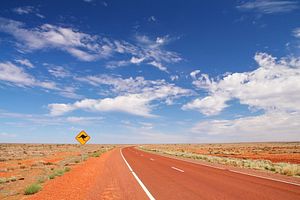Northern Australia doesn’t usually see a lot of action during Australian federal elections. Relatively stable voting patterns, combined with a small number of seats, means that the war-room calculations of the major political parties tend to overlook the region. The voter-rich areas of western Sydney and eastern Melbourne are usually the places where you’ll find the parties’ heavy-hitters out campaigning.
Yet this week saw the leader of the opposition, the Labor Party’s Bill Shorten, spending significant time in northern Australia.
The Labor Party is targeting four seats that lie along the central to far-north Queensland coast, roughly the length of the Great Barrier Reef. However, the Labor leader’s presence there was not only an attempt to shore up local support for votes. There is a larger issue within northern Australia that both Labor and the conservative bloc recognize as being of vital strategic importance to the country.
Australia’s population is heavily concentrated in the southeast of the country, a great distance from everywhere bar New Zealand. Although Australia has done very well for itself out of this phenomenon, the country’s engagement to its north still suffers from the burden of distance. There is a growing political recognition that the development of Northern Australia is essential.
In 2014 the government delivered the Developing Northern Australia White Paper, which outlined the importance and potential of the region and highlighted its proximity to Asia as one of its key attributes.
In the 2015 federal budget, the conservative coalition announced a provision of $5 billion for a Northern Australian infrastructure investment fund. This fund was to be utilized for major infrastructure projects like ports, railways, pipelines, and electricity generation.
The government also created an Office of Northern Australia, and a minister responsible for development within the region.
It has become well-recognized now that Australia cannot simply reply on Chinese growth for its export opportunities, particularly as China’s need for raw materials starts to wane. Developing the northern region of Australia would be a significant pivot toward Southeast Asia (and South Asia) as major markets.
Presently, despite being the country’s closest neighbor, and the world’s fourth most populous country, Indonesia is only Australia’s 13th largest trading partner. Australia’s engagement with Indonesia is vastly underdeveloped given its proximity and size. This is both a significant opportunity yet to be grasped, and a major strategic oversight. While the relationship between Australia and Indonesia is stable at the moment, a major trading relationship would certainly help to strengthen it.
With around 60 percent of Australia’s rain falling above the Tropic of Capricorn, Northern Australia has none of the water resource limits that the traditional agricultural regions of the southeast have, which is particularly important for water-heavy crops like rice and cotton. This combined with lower transportation costs to Asia should make Northern Australia highly desirable for expanding the region’s agricultural yield.
As Asia’s wealth increases the desire for the quality produce that Australia can provide will grow dramatically. However, simply being Asia’s food bowl remains a limited perspective for the region.
During his time in far-north Queensland this week, Shorten announced that a Labor government would redirect a fifth of the Northern Australia Infrastructure Investment Fund toward tourism-specific related infrastructure.
The Labor leader stated that by the year 2030 there would be three billion people in the Asian middle class looking for travel opportunities, and he would hope that those tourists would choose Australia for their holidays.
There is some clever strategic thinking behind Labor highlighting tourism as a key growth sector for the region. Encouraging industries that rely on the preservation of the environment for their income could potentially shift the markets in the region away from industries whose processes may further damage the environment. This is a policy that could also be a major chess move in the Labor Party’s war with the Greens.
While the election campaign will undoubtedly return to the concerns of the vast suburbias of the major cities, there has been some important signalling from politicians to the general public that the north is a region that the country should pay much closer attention to.
With the United States having stationed 1,500 troops in Darwin (increasing to 2,500 next year), the Indo-Pacific connections in Southeast Asia are deemed of great strategic importance for the coming decades. Therefore, a more highly developed and significantly populated Northern Australia should be high on the agenda of whoever wins the forthcoming election.

































